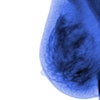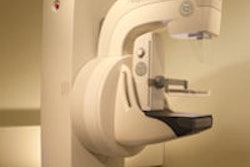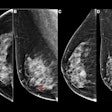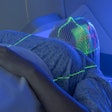Monday, November 30 | 10:05 a.m.-10:15 a.m. | VM21-08 | Arie Crown Theater
The combination of FDG-PET and breast MRI produces higher diagnostic accuracy than breast MRI alone, according to this scientific session presentation to be given by researchers from the University at Duisburg-Essen in Essen, Germany.Dr. Till Heusner and colleagues imaged 27 women with primary breast cancer using breast MRI plus FDG-PET and breast MRI alone, finding 91 lesions. Pathology results defined the sensitivity, specificity, positive predictive value (PPV), negative predictive value (NPV), and accuracy of detecting breast cancer lesions for both techniques.
"In contrast to the high sensitivity and negative predictive value for breast cancer detection, MR mammography has been found to have a substantial rate of false-positive findings, resulting in an only moderate specificity," Heusner told AuntMinnie.com. "This [increases] the risk of overtreatment. Improving the specificity of MR mammography scans would spare breast cancer patients the additional trauma of preoperative invasive procedures."
The team found that the combination of PET with breast MRI was more accurate for lesion detection than just breast MRI alone, although not as sensitive.
"In three patients [included in the study], FDG-PET/breast MRI would have changed the surgical treatment," Heusner wrote. "[The combination of these two modalities] may decrease the number of unnecessary biopsies."
The promise of the two combined modalities will continue to improve as PET technology develops, according to Heusner.
"Further technical developments in PET imaging, alternative PET tracers such as (18)F-16-alpha-17-beta-fluoroestradiol, and in-line MR-PET scanners may further improve anatometabolic breast lesion characterization in the future," he said.




















